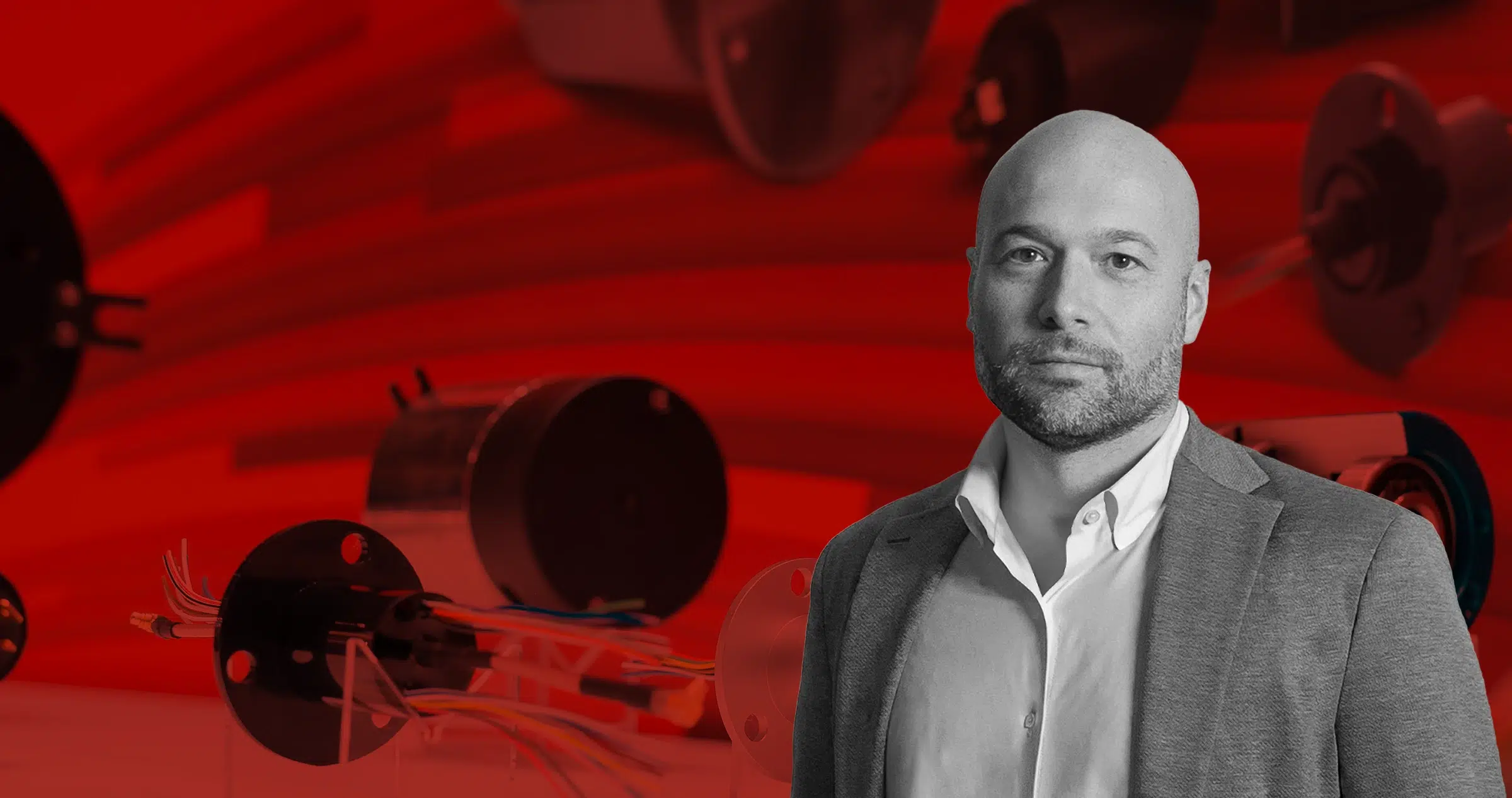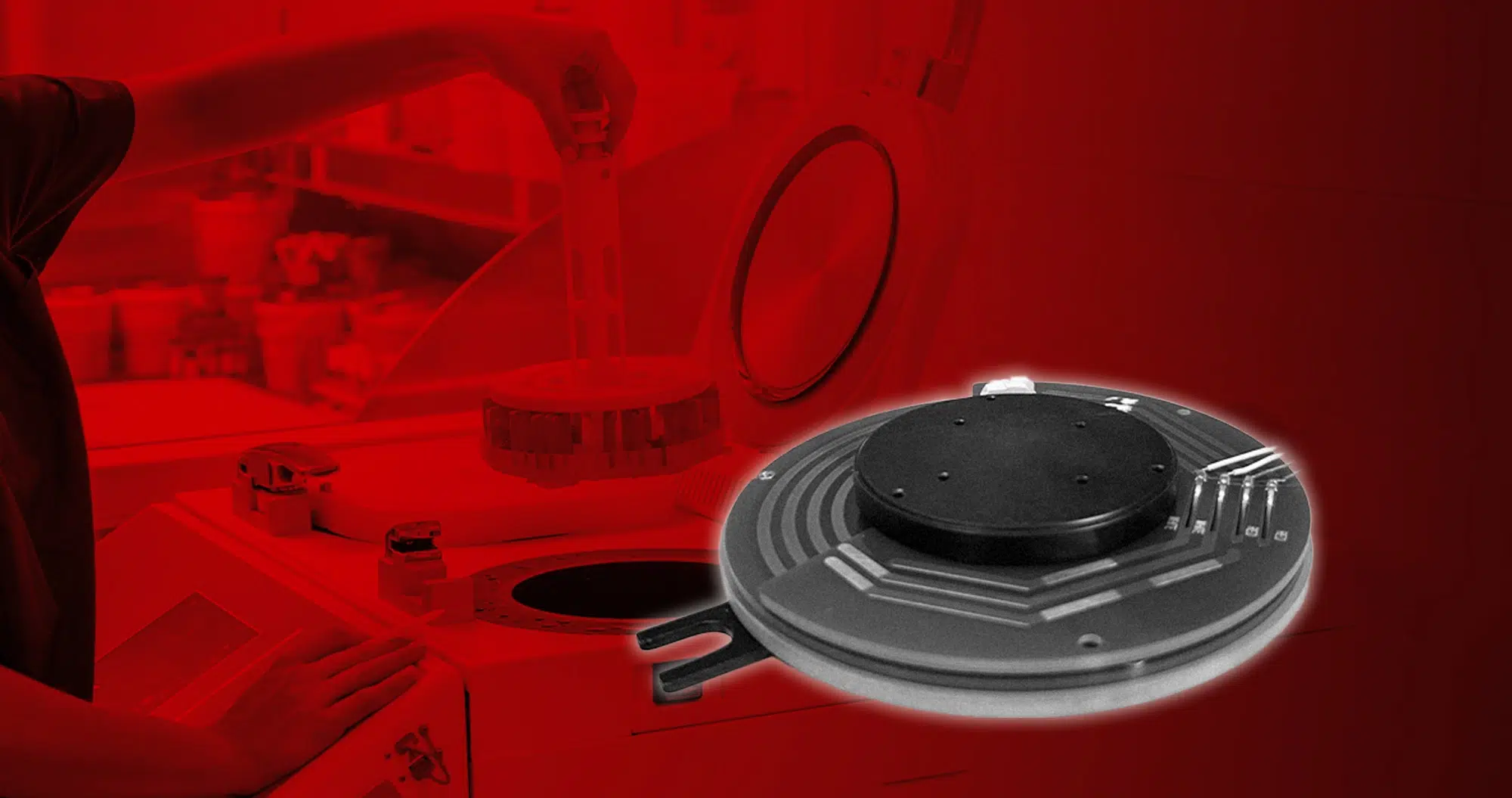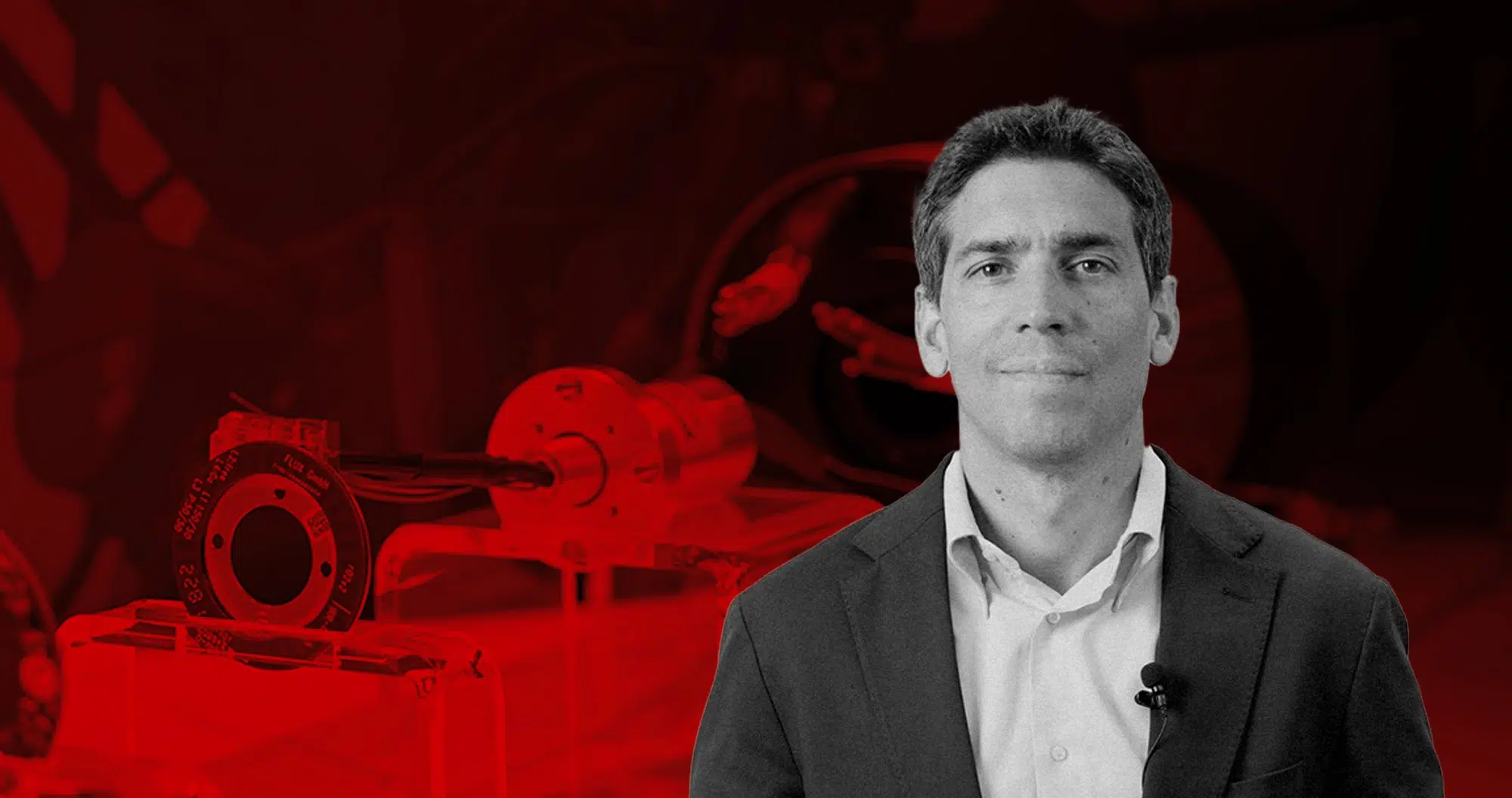Electrically-driven welding guns are supporting the automotive industry’s move away from expensive, energy-intensive compressed air. Thanks to decentralized servo technology, Nimak GmbH has successfully designed welding […]
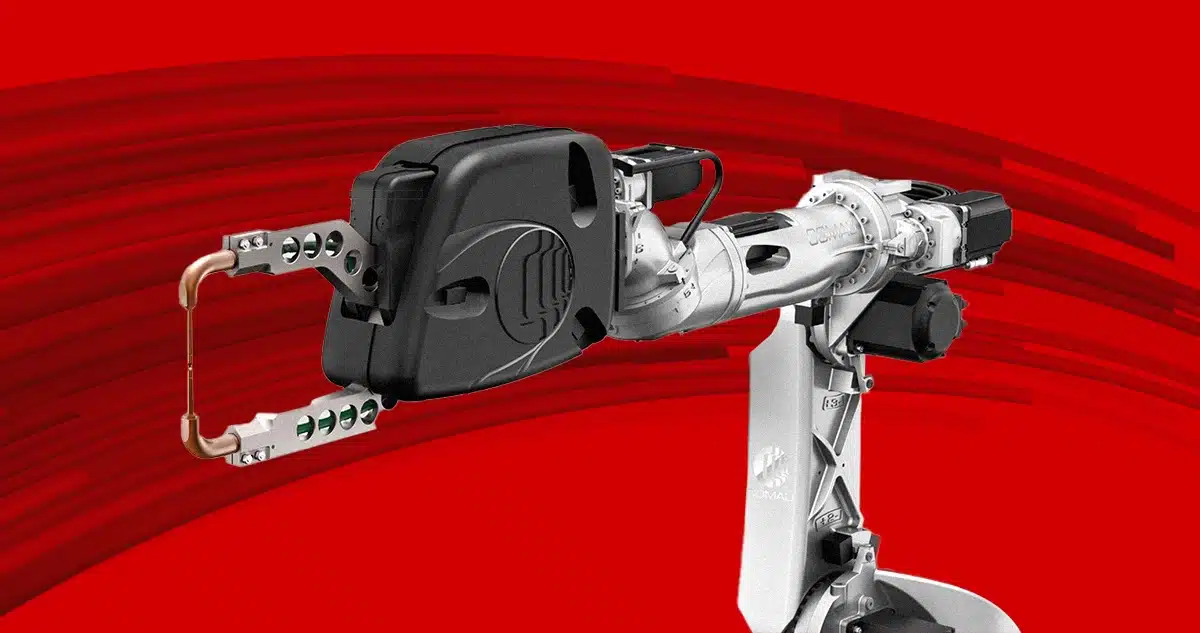
Electrically-driven welding guns are supporting the automotive industry’s move away from expensive, energy-intensive compressed air. Thanks to decentralized servo technology, Nimak GmbH has successfully designed welding guns as independent, compact units that can be connected flexibly to all commonly-used robot brands. Through the use of AMK AMKASMART iC servo converters, the guns no longer need a separate control cabinet. This creates more room in the cell.Image: For a perfect joint, the electrodes must continue moving during welding so that contact with the material is not lost. Our customers increasingly want to move away from pneumatics,” Markus Backst, Director of Electrical Engineering at Nimak, said in describing the current trend in the automotive industry and its suppliers. Compressed air is subject to loss and is expensive to use in production. These two aspects correlate directly with efforts toward achieving greater energy efficiency in factories. So that the use of electric drive technology does not come at the expense of cabling and the production area needed for the control cabinet, Backst noted that “we were looking for a compact drive system that we could apply directly to the welding gun.” With this solution, the specialists from Wissen in Westerwald are also avoiding long, expensive hybrid cables in cases where the welding gun controller is integrated in the robot control cabinet. This possible arrangement bears EMC-related risks, in particular, from high-current welding and the associated magnetic fields. Direct proximity for shorter cables By using AMK servo converters, Nimak was able to benefit precisely at these points. Because the decentralized devices have their own power section, a simple trailing cable is sufficient for the 3-phase energy supply. Another plus factor results from the direct placement of the AMKASMART iC at the actual process. This proximity makes all connecting cables and encoder cables significantly shorter. This aspect reduces installation costs and also has a positive effect on the EMC behavior.
Image: With decentralized servo converters from AMK, Nimak can eliminate a separate control cabinet. The decentralized servo converter in the Nimak welding gun is a standard device that AMK has merely adapted at certain points as part of an overall development project. The standard device at Nimak features DS 402 communication (CAN), modified plug-in connections, and use of the AMK interpolator for limiting the velocity within an expected range. “As everyone knows, converters allow you to very easily position from point A to point B via ramps. Problems arise, however, when this fails,” said Backst. The “failure” in the case of welding guns occurs when both copper electrodes come in contact with material. “When welding is employed, the drive must continue moving while maintaining its speed very precisely.” Backst said, adding that the speed determines the force applied to the steel sheet by the electrodes. A discrete force sensor could be integrated in a gun of this type, but is too expensive for this standard application. Accordingly, the Nimak welding guns equipped with decentralized AMK servo converters operate as torque-controlled guns – without external force sensors. Precise pressure for perfect connections The prevailing compressive forces during welding must be maintained precisely without separate feedback. For example, Audi specifies a tolerance of +/- 50 N – regardless of how heavy the welding gun is. “We have to take into consideration all fields of application of small and heavy guns with different ratios and lever arms and compensate accordingly,” explained the Director of Electrical Engineering. He added that Nimak has developed its own open- and closed-loop control algorithms to meet the precision requirements. Ultimately, precision is the decisive factor for the welding quality and service life of the tools. “When the welding begins, the steel becomes plastic and yields to pressure. If the gun stops moving at this moment, sparks fly because the electrodes lose contact,” Backst explained. “That is why we press on the sheet with a torque corresponding to the force and at a low RPM and build up further pressure.” Thanks to the sophisticated positioning control in the decentralized servo controllers, the guns can close quickly until they have reached the component, in order to save time. It also guarantees that the guns continue moving to a defined position at a precise speed without braking. “Only AMK has accomplished that up to now. With all other manufacturers, we would have to brake beforehand,” stressed Paul Nickel, Managing Director at Nimak. “We have adapted the controller to the specific process. There is close contact between the development departments of the two companies,” reported Edgar Lange, Sales Engineer at AMK. To enable the devices to be easily integrated in existing automation structures, the decentralized servo converters also provide flexible options for connecting different encoder and communication systems. Moreover, digital inputs and outputs are available that can be used to collect and evaluate signals that occur in the process. In terms of safety technology, the devices come equipped with Safe Torque Off (STO) as a standard feature. Safe Torque Off is generally required for operation of welding guns. In the drive and automation technology industry, it is expected that STO will soon become a standard feature of converters.
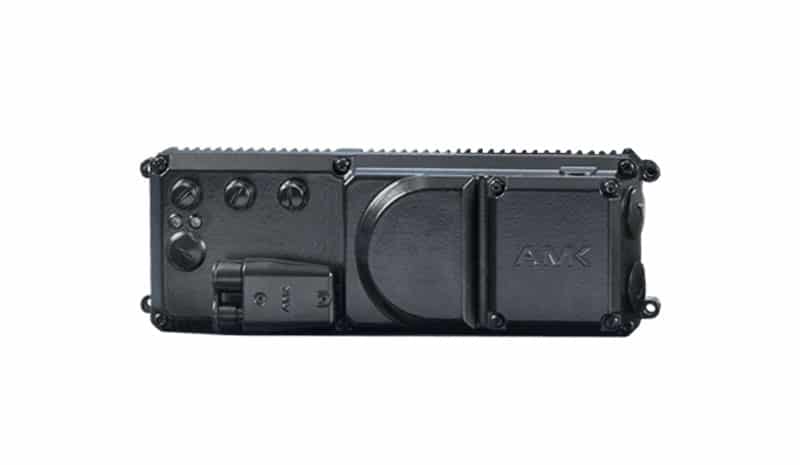
Image: Short cables – direct placement of the robust servo converter makes installation easier and provides for better electromagnetic compatibility.
With its compact decentralized servo converter that combines the power section and the controller itself within a single robust housing with IP65 degree of protection, AMK has unparalleled features. “Most of the systems of other manufacturers are controllers only,” explained Edgar Lange. With the AMK concept, only the actual power supply has to be integrated in practice. Special shielding and hybrid cables are not required. The device concept of AMKASMART iC also opens the way for connecting additional servo controllers directly via the DC link assembly. The AMK series offers appropriate smaller devices without their own power section for this.

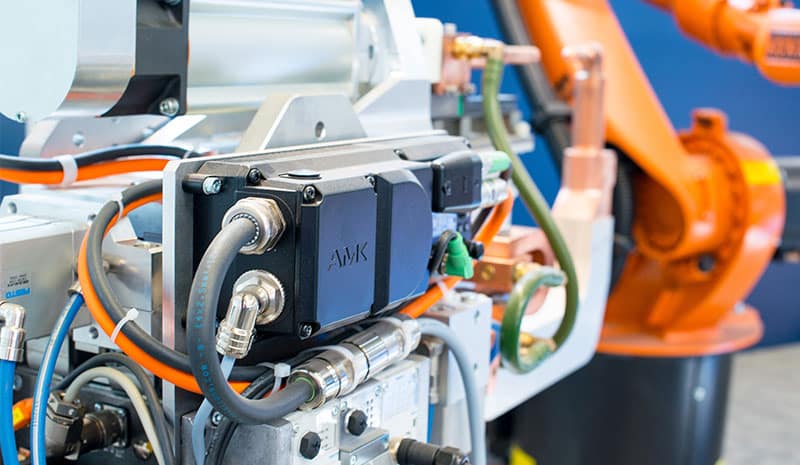
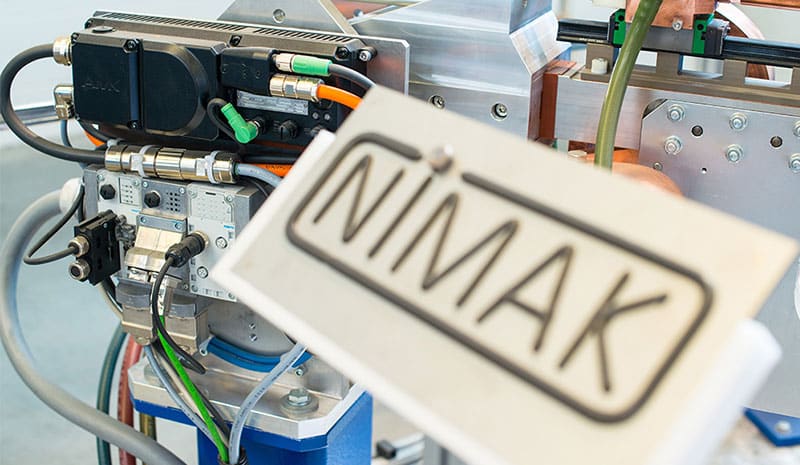
Detail of iC drive for NIMAK welding gun
